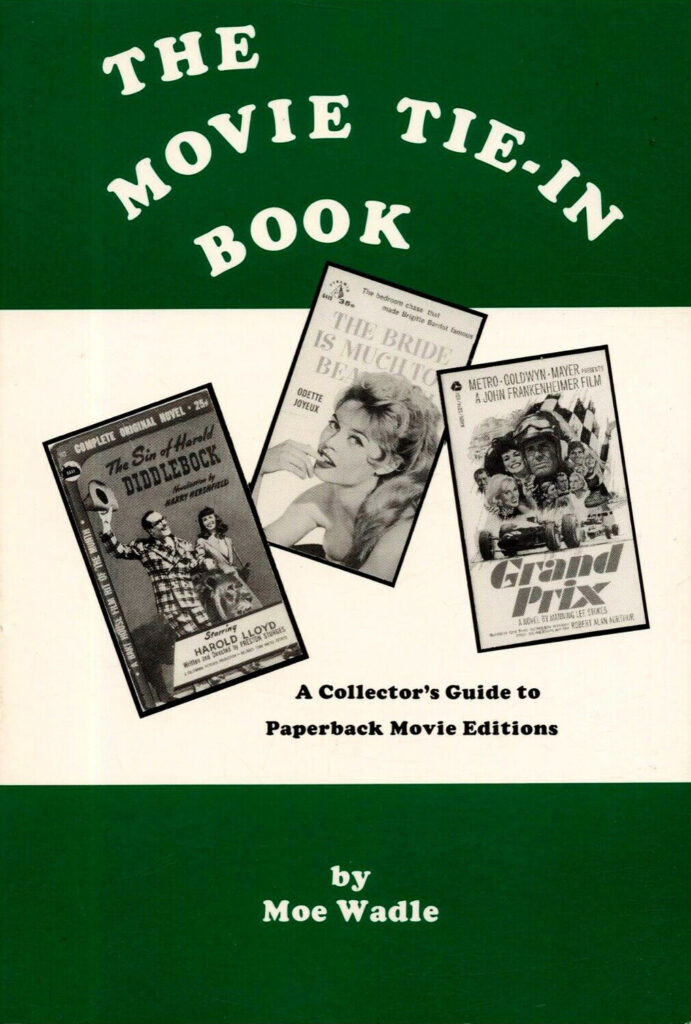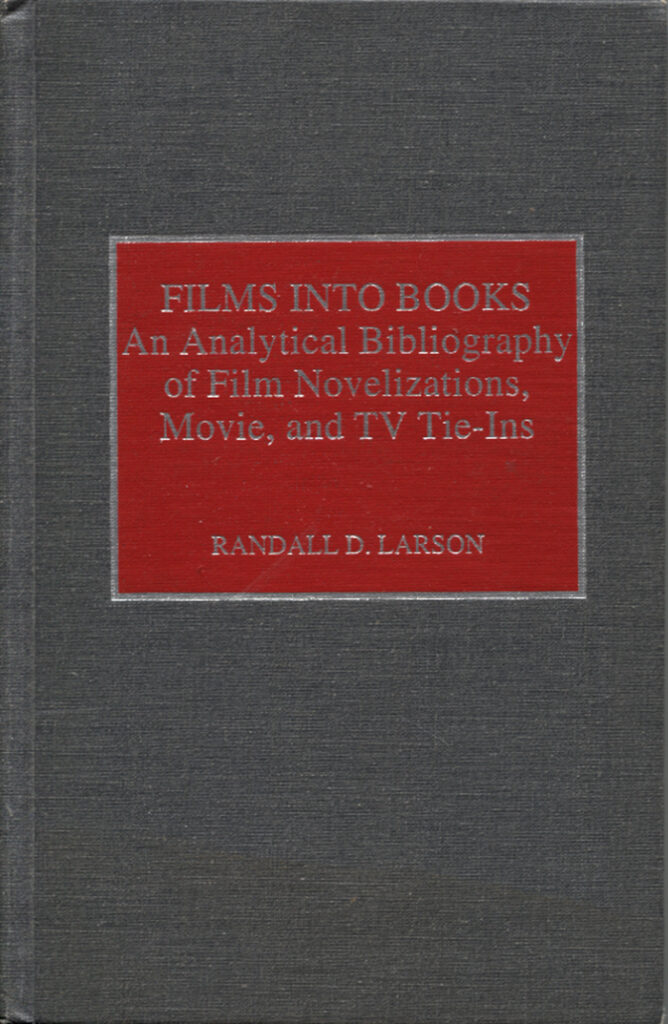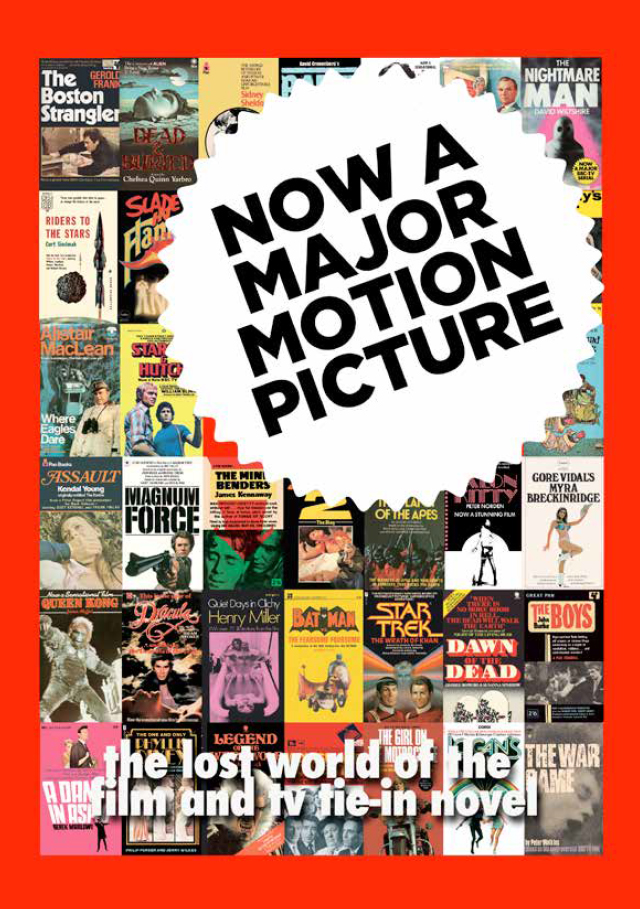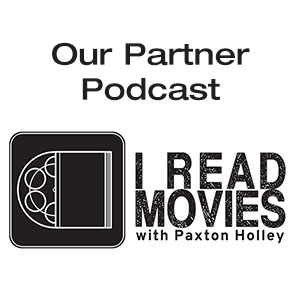The hobby of reading and collecting movie novelizations is a niche one to be sure, so one would figure that with little competition from other collectors and readers that it would be fairly easy to find these books. The thing is, there’s a huge problem that most collectors have to surmount before one can even begin to worry about availability, and that is knowing what to collect. This might sound silly, but there really isn’t any good accounting of what has been published over the years, and many fans and collectors just don’t know what’s floating around out there in used bookstores and antique malls. That is one of the main goals of this site, to create a database that is easily searchable in order to catalog all of these books.
Since our site is no where near an exhaustive collection, yet, we thought we’d take a second to share some of our research and reference material. Again, because this is such a niche hobby, there hasn’t been much study and commentary on movie novelizations. But there are a few cherished volumes in our library that have become and indispensable index of film tie-in and novelizations.
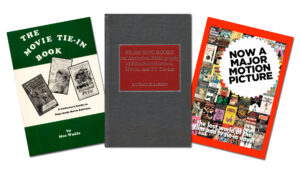
First up is an ambitious reference book called “The Movie Tie-In Book: A Collector’s Guide to Paperback Movie Editions” by Moe Wadle and published by Nostalgia Books in 1994. This slim paperback attempts to create a listing of every single movie tie-in published between the years 1939 to 1980. We’re showcasing this book first for a couple of reasons, one because it was the first book (to our knowledge) that sought to compile a list of tie-ins and novelizations, but also because the scope is fairly wide. As any collector or someone seeking to categorize a genre will attest, focus is one of the first criteria that has to be established before embarking on building a collection. What is it that we’re collecting? For us, the question of what is a novelization was pretty clear and simple. A novelization is any book based on a movie (or subsequently its screenplay or treatment) that follows in the wake of a film production. So books adapted into film, no matter how attractive their variant movie-themed covers might be, just don’t make the cut. So Bram Stoker’s original “Dracula” novel republished with a cover featuring the poster of the 1992 Francis Ford Coppola film does not make the cut, while the brand new adaptation of the film written by Fred Saberhagen and James V. Hart published in the same year does make the cut. But collecting is a fickle ambition and what does and does not become desirable is a wholly subjective thing. Whereas one collector might be a purist, another might have broader tastes, so it’s hard to define what does and does not belong in a genre.
“The Movie Tie-In Book”, as we stated above, is very ambitious in that it seeks to define the genre as any book published that has a gratuitous reference to the film it is tied to. So, books that just feature a tag like “Now a Major Motion Picture”, but with no accompanying film stills or artwork is exempt from inclusion, but the edition of Bram Stoker’s “Dracula” with the Coppola movie poster as the cover makes the cut. Or would if the list was extended into the 90s. For our purposes, this book was a great starting point in tracking down novelizations we never knew existed, for instance the very rare 1976 release of “Black Christmas” written by Lee Hays, or the two Herschel Gordon Lewis films that were adapted into novels, “Blood Feast” (written by L. E. Murphy) or “Color Me Blood Red” (adapted by Lewis himself.) But there are a lot of editions listed in the book that fall into the camp of the tie-in and were previously published. So “The Movie Tie-In Book” is a good starting point, but it doesn’t distinguish between the two styles of book and therefore it requires another level of research and investigation. It’s also unfortunate that even though it was compiled in the 90s it neglects list much of anything from the 80s and that is a very large gap. Still, it’s a great source of reference for collectors.
Next, we have the gold standard of novelization research, the movie novelization bible if you will, “Films into Books: An Analytical Bibliography of Film Novelizations, Movie and TV Tie-Ins” by Randall D. Larsen and published by Scarecrow Press in 1995. This mammoth tome is both an examination and a bibliography of the film-to-book genre featuring interviews with 50 novelization authors, essays on the medium, and a fairly exhaustive annotated list of books from the turn of the century up until this volume was published in 1995. For collectors and fans, the wealth of information in this book is staggering. As an example, there’s an interview with Eileen Lottman a prolific novelization author who found that the publishing houses would not take a woman writing action movie adaptations seriously, so it forced her to write under the pseudonym Mike Cogan (“Top Gun“, “The Presidio”, and “Black Rain”.) Stories from novelization authors like this are kind of rare, so it’s really cool that there are so many included with this volume. Though the overview and interview portions of the book aren’t very long, there is still more packed in these pages about the process of writing novelizations than almost anywhere else, either in print or online.
In trying to find out more about Larson, the author, we’ve sort of hit a brick wall, but he seems to be quite an interesting guy when you take a look at the other books he’s written. In addition to this deep dive into novelizations, Larson also wrote two books on film music, specifically the music used in science fiction and horror movies (one titled “Musique Fantastique” which is the first of its kind and another “Music From the House of Hammer“.) So Larson is no stranger to writing about niche subjects. We haven’t been able to find out much about Larson in terms of biographical information aside from the fact that he edited a number of fantasy fanzines in the 70s, and has waded deep into the world of film music for publications like Cinema-Score and Soundtrack! The Collector’s Quarterly. Even though this book is almost 25 years out of date, it still does an amazing job of covering the golden age of novelizations not covered in “The Movie Tie-In Book” and it should be considered a must-have for any collector or fan looking to find out just what has been made available over the years. Sadly, it’s long out of print, and fairly scarce on the secondary market. There are usually copies available on Amazon and eBay, though they tend to range in price from $70 to $150.
Finally, we have a rather new reference publication, “Now a Major Motion Picture: the Lost World of the Film and TV Tie-In Novel” by David Flint and published by Reprobate Press in 2019. If there is one main weakness with the “Films into Books” bible above it’s that it heavily focuses on novelizations published in the United States. “Now a Major Motion Picture” on the other hand focuses solely on books published in the United Kingdom, which is a huge boon for fans and collectors in the US because there are a lot of novels for popular American films that were only released abroad. Though this book isn’t an exhaustive collection of UK novelizations, and it does feature a fair amount of tie-ins (for movies based on books), there is still a lot to discover in this limited edition release. What’s even better is that the book is fully illustrated with full color covers of all the books discussed. Films into Books features no pictures or scans, and The Movie Tie-In book has only black and white thumbnail images of select titles throughout the book. So if nothing else, “Now a Major Motion Picture” makes for a really cool coffee table book and a great conversation starter.

